Yes We Can Can
New Orleans has figured into this election season as a reminder of the Bush administration's bungled, uncaring response to Katrina. Yet amid so much talk of hope and change, on this anniversary of disaster, many in New Orleans hope for a change of policy -- the kind of federal assistance that can make a dent in crises of housing, public safety, education, health care and levee protection. It makes sense for musicians to kick-start that conversation.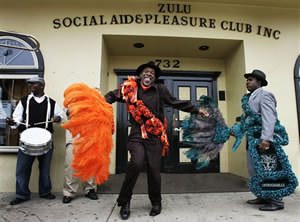
Sunday night, when Allen Toussaint played “Yes We Can Can” for Democratic convention delegates in Denver, the song sounded tailor-made for the Obama campaign. But he wrote it in New Orleans, in 1970, inspired by a different era of change.
No wonder. New Orleans musicians have for more than a century anticipated and articulated just what this country needs. Now three years past the floods that followed Katrina, Toussaint and other bearers of the city’s unique (and uniquely American) culture — jazz musicians, brass-band members, Social Aid & Pleasure Club second-liners and Mardi Gras Indians — call on the country to respond to their needs for the good of us all. We must recognize this culture as essential to New Orleans’ recovery, not to mention the restoration of our damaged national identity.
Toussaint was just one in a dazzling lineup of Crescent City musicians that kicked off the DNC’s week. The presence ran yet deeper: Monday night, Margie Perez, a singer who lost her New Orleans home to Katrina but has since moved back, spoke from the convention stage. Denver’s resonant notes are likely to turn dissonant when some of these musicians move on to Minneapolis for an RNC party next week: How, for instance, will Tab Benoit’s “Voices of the Wetlands” be received against the backdrop of John McCain’s “drill here, drill now” refrain?
The larger questions posed by these convention-related performances reflect the paradox surrounding New Orleans culture even in its hometown: Did the musicians make a statement of identity tied to political purpose (the needs of communities that created and nurtured this culture)? Or were they merely a traveling “Crescent City” revue?
New Orleans has figured into this election season as a reminder of the Bush administration’s bungled, uncaring response to Katrina. Yet amid so much talk of hope and change, on this anniversary of disaster, many in New Orleans hope for a change of policy — the kind of federal assistance that can make a dent in crises of housing, public safety, education, health care and levee protection. It makes sense for musicians to kick-start that conversation.
New Orleans, a city built on culture, must be rebuilt on culture if it is to stand strong. On a practical level, that’s obvious: The New Orleans Convention and Visitors Bureau reports the tourism industry as the city’s leading employer, bringing in 35 percent of the city’s operating budget. And those promotional brochures have photos of upturned trumpets, second-line fancy dancers and Mardi Gras Indians in spectacular feathered and beaded suits.
But there’s more to consider. “Yes We Can Can” moves to the same beat that animates nearly all New Orleans culture, which, in turn, owes to the rhythms of 19th-century drummers and dancers in Congo Square — enslaved Africans who, on Sundays, enjoyed moments of free expression and community organization. Historically, second-line parades held by Social Aid & Pleasure Clubs, jazz funeral processions and Mardi Gras Indian assemblies, which feature that same beat, have blended joy and funkiness with political activism and social cohesion. In the wake of Katrina, even on the city’s most desolate streets, these events marked the earliest assertions of a right to return, the only semblance of normalcy and continuity. And in a city bereft of sound political leadership, culture-bearers filled that void: In January 2007, for example, when thousands marched to City Hall protesting a lack of police protection, trombonist Glen David Andrews rose to say, “We are young black men preaching culture.” A chant erupted: “Music in the schools!”
Culture must be the foundation of a rebuilt New Orleans if it is to stand for what it has always represented — if it is to remain what Ken Burns’ 19-hour PBS series “Jazz” famously cast as a symbol of American values and virtues on the order of the Constitution. This will happen only if we address the uneven and unequal nature of recovery thus far. The $100-billion federally funded Road Home Community Development grant, for instance, has distributed no money to renters, even as rents have risen 46 percent since Katrina, according to the Greater New Orleans Community Data Center. Poor and middle-class black neighborhoods are largely either still desolate or quickly gentrifying beyond reach. The culture of New Orleans depends on the integrity of these communities, lest it be turned into a mere tourist show or, worse yet, a museum piece. And these communities need the culture to thrive. In other cities, culture comes from the top down. In New Orleans, it springs from the street. No neighborhoods, no culture.
Making music in New Orleans has, for the most part, always meant a marginal living. In the three years since Katrina, it’s become a losing proposition. Right around last year’s Katrina anniversary, a “Musicians Solidarity Second Line” featured dozens of musicians carrying but not playing their instruments. Not a note played, not a step danced. A slow, steady rain lent dramatic drips to homemade signs that read: “Living Wages = Living Music” and “Imagine a Silent NOLA.” When the procession reached the French Quarter’s Jackson Square, the Musicians Union president, “Deacon” John Moore, addressed the small crowd. “It ain’t easy in the Big Easy,” he said.
Sweet Home New Orleans, a nonprofit organization that has distributed more than $2 million in aid to cultural figures and institutions since the flood, released a “State of New Orleans Culture Report” today [Aug. 29]; it estimates that three-quarters of the city’s 4,500 culture-bearers have returned, yet to harsh circumstances. Musicians have about half as many gigs, each paying roughly 20 percent fewer. Meanwhile, their cost of living has risen more than 10 percent.
Even those who manage these challenges find a more insidious one: The sense that they’re not exactly welcome back. There’s a culture war going on in New Orleans — one with deep historical roots but brand-new firepower and dangerous stakes. That conflict defines the tangle of tensions figuring into the rebuilding process and the issues of race and class underscoring them all.
Michael White, a clarinetist and Xavier University professor, told me: “There’s a feeling among many that some of our older cultural institutions, like parades and jazz funerals, are in the way of the progress and don’t fit in the new vision of New Orleans. That they should only be used in a limited way to boost the image of New Orleans, as opposed to being real, viable aspects of our lives.”
There’s plenty of evidence to support that thought. Musicians were arrested last October during a funeral procession — charged with “disturbing the peace” — in Tremé, one of the oldest black neighborhoods in America and long an incubator for jazz tradition. At recent Mardi Gras Indian gatherings, the spectacle of black men looking fierce in eight-foot-tall suits of feathers and beads has lately been overtaken by the sirens and flashing lights of NOPD cruisers, enacting their own display of power and domain. And last April, Social Aid & Pleasure Clubs took to federal court to challenge the city’s hiking of police security fees for their parades — and won. The suit invoked the First Amendment right to freedom of speech and expression, claiming that permit schemes “effectively tax” such expression. “Should the law not be enjoined,” the complaint stated, “there is very little doubt that plaintiff’s cultural tradition will cease to exist.”
Three years ago, in the wake of the floods, New Orleans culture made for potent metaphor. Those jazz musicians, Mardi Gras Indians and fancy-dancing second-liners made for instant B-roll and catchy human-interest characters in story after story of despair and destruction, repair and resilience.
But they are the story. If America is ready to place a black man in the White House, then our politics have caught up with our culture, which was always drawn from African-American experience, especially in New Orleans. Should Democrats find themselves empowered to turn a mantra of change into action, they might begin by rebuilding and protecting New Orleans, which relies on its local culture and seeds our national one.
Such a focus might even energize Barack Obama’s theme, with some rhythmic emphasis: Yes we can can.
Larry Blumenfeld is working on a book about cultural recovery in New Orleans based on his research as a Katrina Media Fellow with the Open Society Institute. His writing has appeared in The Wall Street Journal and The Village Voice, among other publications, and his essay “Band on the Run in New Orleans” will appear in the forthcoming “Best Music Writing 2008” (Da Capo). He is editor at large of Jazziz magazine.
Related Links:
1) Click here to see the Sweet Home New Orleans State of Music report. 2) Follow this link to The New Orleans Index. 3) Watch an Obama promo video scored to Toussaint’s “Yes We Can Can” here.
Your support is crucial…With an uncertain future and a new administration casting doubt on press freedoms, the danger is clear: The truth is at risk.
Now is the time to give. Your tax-deductible support allows us to dig deeper, delivering fearless investigative reporting and analysis that exposes what’s really happening — without compromise.
Stand with our courageous journalists. Donate today to protect a free press, uphold democracy and unearth untold stories.

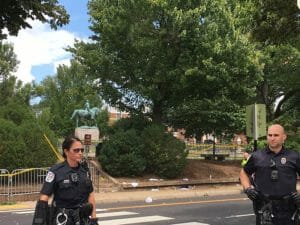
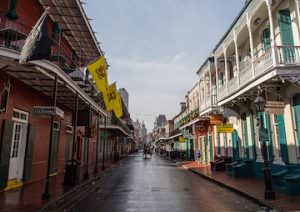
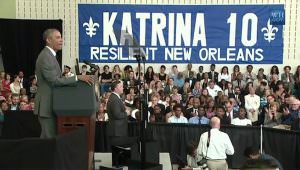
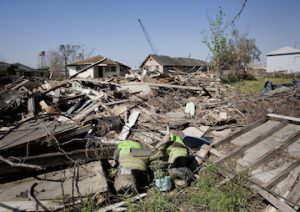
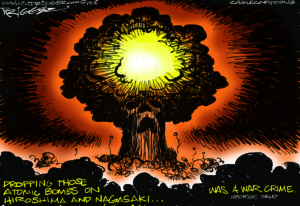
You need to be a supporter to comment.
There are currently no responses to this article.
Be the first to respond.